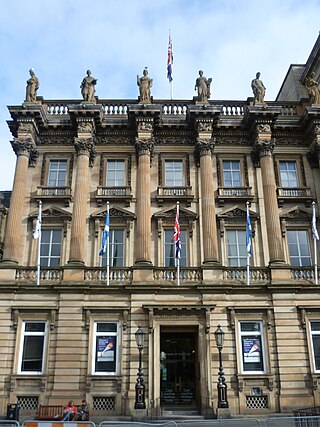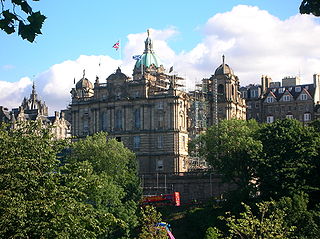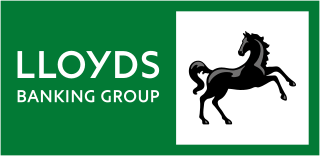Bank of Scotland plc
The Governor and Company of the Bank of Scotland was unusual in its legal structure, as it was a company formed under statute, the 1695 act, and was governed under the provisions of that act and successive acts of Parliament relating to the bank. The most important was the Bank of Scotland Act 1920, which set out the bank's business objectives and its regulations.
HBOS Group wished to restructure the bank into a public limited company (plc) governed under the Companies Act 1985, and transfer the assets and liabilities of its other UK subsidiaries with a banking licence (Capital Bank, Halifax plc and HBOS Treasury Service plc) to the new Bank of Scotland plc. By doing it could save the costs of maintaining four banking licences, and the need for four separate companies, each with their own board of directors.
The transfer of assets and liabilities from one bank to another also requires the consent of the account holders. For institutions such as the Halifax, this would involve seeking the consent of millions of people, and would be impractical. Thus an act of Parliament gives HBOS the statutory authority to transfer accounts without seeking individual account holder approval.
The act also allowed the company to retain the right to print banknotes.

The Bank of Scotland plc is a commercial and clearing bank based in Edinburgh, Scotland, and is part of the Lloyds Banking Group. The bank was established by the Parliament of Scotland in 1695 to develop Scotland's trade with other countries, and aimed to create a stable banking system in the Kingdom of Scotland.

Halifax is a British banking brand operating as a trading division of Bank of Scotland, itself a wholly owned subsidiary of Lloyds Banking Group.

Lloyds Bank plc is a British retail and commercial bank with branches across England and Wales. It has traditionally been considered one of the "Big Four" clearing banks. Lloyds Bank is the largest retail bank in Britain, and has an extensive network of branches and ATMs in England and Wales and offers 24-hour telephone and online banking services.

Alliance & Leicester plc was a British bank and former building society, formed by the merger in 1985 of the Alliance Building Society and the Leicester Building Society. The business demutualised in the middle of 1997, when it was floated on the London Stock Exchange. It was listed in the FTSE 250 Index, and had been listed in the FTSE 100 Index from April 1997 until June 2008.
ACC Loan Management Limited, formerly ACCBank plc, was originally a commercial bank in Ireland that focused on agriculture and SME lending, and later became a company that focussed on managing the lending facilities of its existing clients. The bank had its origins in the Agricultural Credit Corporation set up in 1927 in the Irish Free State to finance agriculture; the bank was successful and led to the creation of the Industrial Credit Company, which was modelled on it and provided finance to industry. In the early 1990s, the company name was changed from "Agricultural Credit Corporation plc" to "ACCBank plc" in order to signify that the company was then targeting more than simply agricultural customers. In early 2002, the bank was sold by the Irish Government to Rabobank, it was one of the three entities of the Rabobank (Ireland).
Bank of Scotland (Ireland) Limited was a wholly owned subsidiary of the Bank of Scotland, which later became part of Lloyds Banking Group. It offered commercial and corporate banking services under the Bank of Scotland brand and retail banking services under the Halifax brand. From 10 February 2010 the bank no longer accepted new business and it ceased to operate as a licensed bank on 31 December 2010. The assets of the bank were merged into Bank of Scotland plc.

An unlimited company or private unlimited company is a hybrid company (corporation) incorporated with or without a share capital but where the legal liability of the members or shareholders is not limited: that is, its members or shareholders have a joint and several non-limited obligation to meet any insufficiency in the assets of the company to enable settlement of any outstanding financial liability in the event of the company's formal liquidation.
Birmingham Midshires is an online trading name of Bank of Scotland plc. It is headquartered at Pendeford Business Park, Wolverhampton. It previously had 67 branches throughout England and Wales. Previously, Birmingham Midshires was a building society, known as the Birmingham Midshires Building Society.
Banking in the United Kingdom can be considered to have started in the Kingdom of England in the 17th century. The first activity in what later came to be known as banking was by goldsmiths who, after the dissolution of English monasteries by Henry VIII, began to accumulate significant stocks of gold.

The British Linen Bank was a commercial bank based in the United Kingdom. It was acquired by the Bank of Scotland in 1969 and served as the establishment's merchant bank arm from 1977 until 1999.

The Royal Bank of Scotland is a major retail and commercial bank in Scotland. It is one of the retail banking subsidiaries of NatWest Group, together with NatWest and Ulster Bank. The Royal Bank of Scotland has around 700 branches, mainly in Scotland, though there are branches in many larger towns and cities throughout England and Wales. The bank is completely separate from the fellow Edinburgh-based bank, the Bank of Scotland, which pre-dates the Royal Bank by 32 years. The Royal Bank of Scotland was established to provide a bank with strong Hanoverian and Whig ties.

The Banking Act 2008 is an Act of the Parliament of the United Kingdom that entered into force on the 21 February 2008 in order to enable the UK government to nationalise high-street banks under emergency circumstances by secondary legislation. The Act was introduced in order to nationalise the failing bank Northern Rock after the bank was supported by Bank of England credit and a private-sector solution was deemed "not to provide sufficient value for the taxpayer" by the UK government.

HBOS plc is a banking and insurance company in the United Kingdom, a wholly owned subsidiary of the Lloyds Banking Group, having been taken over in January 2009. It was the holding company for Bank of Scotland plc, which operated the Bank of Scotland and Halifax brands in the UK, as well as HBOS Australia and HBOS Insurance & Investment Group Limited, the group's insurance division.
UK Financial Investments (UKFI) was a limited company set up in November 2008 and mandated by the British government to manage HM Treasury's shareholdings in the Royal Bank of Scotland Group (RBS) and in UK Asset Resolution, which held the residual assets of NRAM plc and Bradford & Bingley. UKFI formerly managed the British government's shares in Lloyds Banking Group, until the government confirmed that all its shares had been sold on 17 May 2017. It also previously owned Northern Rock, until that company was taken over by Virgin Money on 1 January 2012. UKFI ceased trading on 31 March 2018, and its business and assets were transferred to UK Government Investments, a limited company wholly owned by HM Treasury.

Lloyds Banking Group plc is a British financial institution formed through the acquisition of HBOS by Lloyds TSB in 2009. It is one of the UK's largest financial services organisations, with 30 million customers and 65,000 employees. Lloyds Bank was founded in 1765 but the wider Group's heritage extends over 320 years, dating back to the founding of the Bank of Scotland by the Parliament of Scotland in 1695.
NCBA Bank Kenya, whose full name is NCBA Bank Kenya Plc, is a commercial bank in Kenya. It is licensed by the Central Bank of Kenya, the country's central bank and national banking regulator.

Clerical Medical is a British life assurance, pensions and investments company founded in 1824, and a subsidiary of Lloyds Banking Group.

TSB Bank plc is a British retail and commercial bank based in Edinburgh, Scotland. It has been a subsidiary of Sabadell Group since 2015.

Capital Bank plc was a subsidiary bank of the Bank of Scotland and HBOS. Its head offices were located in Chester, England. Its main products were leasing, installment credit, and mortgages. In the late 20th century, it became Chester's largest employer.













